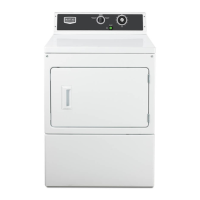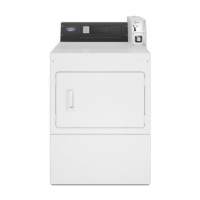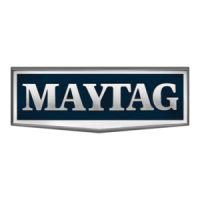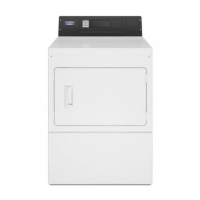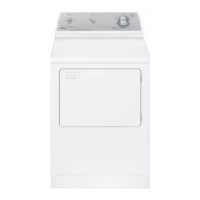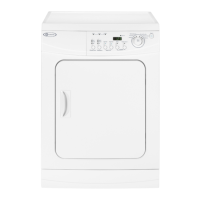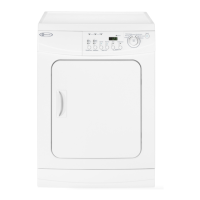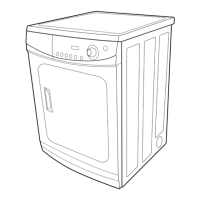10
VENTING REQUIREMENTS
WARNING: To reduce the risk of re, this dryer MUST BE
EXHAUSTED OUTDOORS.
IMPORTANT: Observe all governing codes and ordinances.
■ Following these venting requirements will minimize ducting
air noise.
■ Exhaust air must not be discharged into a ue for
exhausting fumes from appliances burning gas or other
fuels, including open res (i.e., available airow into
the room should match airow out from the room).
■ Adequate ventilation must be provided to avoid the back
ow of gases into the room from appliances burning other
fuels, including open res.
■ Dryer exhaust must not be connected into any gas vent,
chimney, wall, ceiling, attic, crawlspace, or a concealed
space of a building. Only rigid or exible metal vent shall
be used for exhausting.
■ Do not use an exhaust hood with a magnetic latch.
■ Only a 102 mm (4") heavy, metal exhaust vent and clamps
may be used.
■ Do not use plastic or metal foil vent.
Rigid metal vent:
■ Recommended for best drying performance and to avoid
crushing and kinking.
Flexible metal vent: (Acceptable only if accessible to clean)
■ Must be fully extended and supported in nal dryer location.
■ Remove excess to avoid sagging and kinking that may
result in reduced airow and poor performance.
■ Do not install in enclosed walls, ceilings, or oors.
■ The total length should not exceed 2.4 m (7
3
⁄
4
ft.).
■ An exhaust hood should cap the vent to keep rodents and
insects from entering the building.
102 mm
(
4"
)
102 mm (4") heavy, metal exhaust vent
Elbows:
■ 45° elbows provide better airow than 90° elbows.
■ Plan installation to use the fewest number of elbows
and turns.
■ Allow as much room as possible when using elbows
or making turns. Bend vent gradually to avoid kinking.
■ Vent outlet is located at the center of the bottom dryer back.
■ The vent can be routed up, down, left, right, behind the
dryer, or straight out the back of the dryer.
Clamps:
■ Use clamps to seal all joints.
■ Exhaust vent must not be connected or secured with
screws or other fastening devices that extend into interior
of duct and catch lint. Do not use duct tape.
Better
Good
NOTES:
n Although usually each single-load dryer should have
an unobstructed outdoor air opening of 24 in.
2
(154 cm
2
)
(based on 1 in.
2
[6.5 cm
2
] per 1,000 Btu [252 kcal]), common
makeup air openings are also acceptable. Set up common
openings so the makeup air is distributed equally to all of
the dryers. Keep in mind that the coverage area must be
increased by 33% to account for the use of registers or
louvers over the openings. Also, makeup air openings should
not be installed near the location where exhaust vents exit
the building.
n If using an existing vent system, clean lint from entire length
of the system and make sure exhaust hood is not plugged
with lint. Replace plastic or metal foil vents with rigid metal
or exible metal vents. Review “Vent System Chart” and,
if necessary, modify existing vent system to achieve best
drying performance.
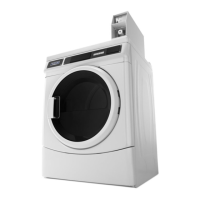
